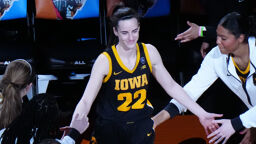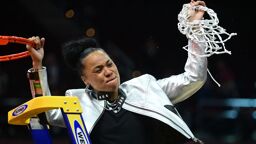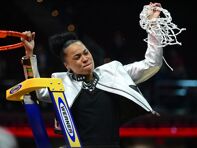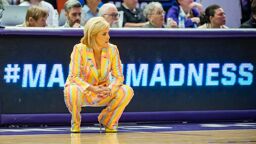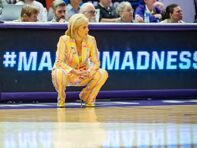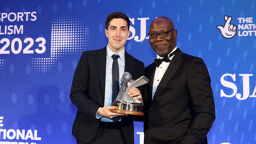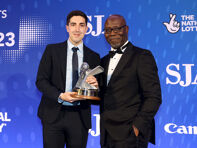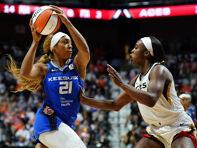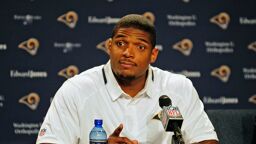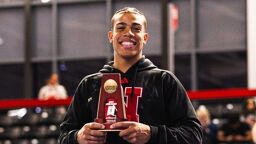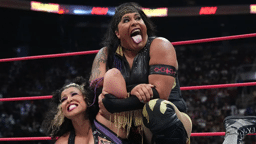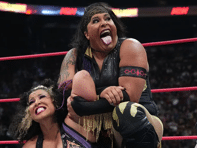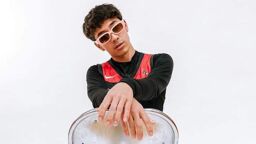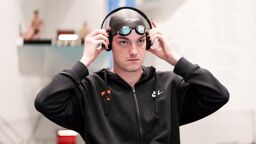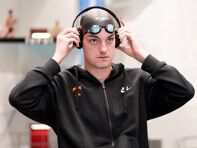Since the Brooklyn Nets signed Jason Collins, they are 9-3. They have the best 10-game record in the Eastern Conference. In the midst of a run at the playoffs, the streak is a much-needed boost to their record, winning road games and beating playoff contenders. While Collins hasn't played many minutes or contributed much in the box score, the team has won. Now they've signed him for the rest of the season.
At his games, Collins has been cheered either when introduced or when he's taken the court – And that includes the road games. At the Nets' first home game with Collins, the crowd gave him a standing ovation and chanted his name – all of this for a player who wasn't on the roster less than two weeks earlier.
His jersey sales led all players on the NBA's online store the week after he was signed to his first 10-day contract. This wasn't a starter or a leading scorer or an All-Star candidate – It was a player who had been without a team for almost a year coming off the bench suddenly having an explosion of jersey sales.
Nike, one of his sponsors, has embraced him since coming out, working with him to spread their #BeTrue message.
How did the media get this so wrong?
We have been told for years that a publicly out athlete on one of the big men's pro sports teams would be a disaster. The fans would make it difficult for him. Sponsors would run away. Coaches and front offices would put him on their black list. If all else failed, the media itself would cause trouble: They have pushed the idea of a "media circus" surrounding the player that would drive the team to distraction.
Instead, they got it all wrong. The media failed to see that barriers in sports had been coming down for years. Some of them ignored the facts, others discredited them. Some just flat-out refused to believe it.
In 1999, high school football captain Corey Johnson came out to his team in Massachusetts. His team embraced him, even defending him against verbal jabs from other teams.
In 2000, Bloomsberg University football captain Brian Sims came out to his team. They embraced him and played in the Div. II national championship game.
In 2005, Dartmouth College lacrosse goalie Andrew Goldstein came out to his team, came out publicly, was profiled by ESPN and was drafted – as an openly gay man – by the Boston Cannons. The next year another team – the Long Island Lizards – signed him. Again, this was after he had come out publicly. All of his teams embraced him.
In 2010, professional Welsh rugby player Gareth Thomas came out publicly and was embraced by his team. After that season another team in another league pursued and ultimately signed him to a new contract. By all accounts, he was embraced by his teams and fans.
In 2013, the Los Angeles Galaxy traded the leading scorer and eventual league MVP of Major League Soccer to acquire the rights to Robbie Rogers, who had come out publicly as gay in an open letter. He was embraced by his new team and the season concluded without incident after a brief playoff run.
Earlier this year, Willamette College kicker Conner Mertens came out publicly. Mertens is a redshirt freshman who had not played a down for the team. Yet the entire team and coaching staff embraced him and his public coming out. His boyfriend, college baseball player Chandler Whitney, experienced the same thing when he came out.
The same thing happened for Drew University baseball catcher Matt Kaplon. And Erskine College volleyball players Drew Davis and Juan Varona. And Univ. of Virginia swimmer Parker Camp. And Notre Dame tennis player Matt Dooley. And Benedictine College forward Jallen Messersmith. And Kenyon College lacrosse player Holden Richards. And Bucknell soccer player Jesse Klug. And Olympic hopeful Josh Dixon. On the women's side, Brittney Griner, Seimone Augustus, Megan Rapinoe, Abby Wambach and countless others have been completely embraced by teammates and fans.
Yet all long, many in the media kept pointing to "The Big Four" sports leagues as somehow completely different from every locker room where a male athlete had come out. The locker rooms of the NFL, NBA, NHL and MLB were somehow far more homophobic, far more macho, far less educated and deeply stuck in the 1950s. The fans were ready to throw endless taunts his way. The Big Four leagues were "just different."
The media couldn't have been further from the truth – Collins has proven that. The drafting of Michael Sam will prove it again in May.
The media collectively failed to see the reality in the stories mentioned above. Sure, guys can be pretty nasty and heterosexist when left alone, but that's before an athlete comes out on the team. Once they have an openly gay athlete in the mix, the environment improves every time. Every. Time.
Professional locker rooms were never less ready than high schools and colleges – They have been ready for it for years.
Every NFL player I've spoken to about the culture of pro locker rooms – Michael Irvin, Chris Kluwe, Scott Fujita – all say the same thing: They heard rampant homophobia in high school, they heard less of it in college, and the pro locker rooms they were part of were nearly devoid of it. Even Kluwe said the much-reported anti-gay comments by coach Mike Preifer were a very rare exception to a Vikings locker-room environment nearly void of outward homophobia.
The Michael Sam story was the latest example. While being lauded for his courage by many in the media, the stories about him were filled with the assertion of "problems," "challenges," "hurdles" and "fear."
All of it is bullshit.
The result of the media's failure to understand these dynamics has had powerful repercussions. Professional athletes bury their truth deep within themselves because of the picture painted by the media of a world that won't accept them. College and high school athletes follow suit, buying into the notion that their teammates will reject them if they come out.
The reason Sam, Collins, Rogers and so many others have needed courage to simply tell their truth is the fear spread by the very media that lauds them.
The media has a responsibility over the rest of 2014 to unearth the truth about homophobia in pro sports: It is virtually dead.
Athletes will not reject a teammate because he is gay. Coaches will not shy away from drafting a player who has come out. The fans won't attack a gay athlete, they will embrace him. Fortune 500 companies won't reject a gay athlete, they will work with him.
This is the truth in 2014. It's a truth we at Outsports – along with folks across the LGBT Sports Coalition – have been preaching for years.
It's time every member of the sports media waded through the stereotypes and assumptions and sought the truth on this issue.





